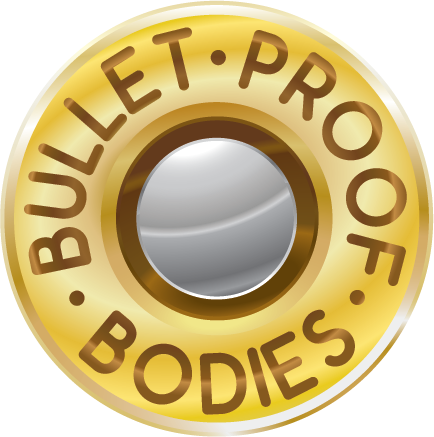The word plyometric comes from the Greek word “pleythyein,” which means to increase or augment. It is based on two Latin root words, plio, which means more and metric, which means to measure.
The term was first used in 1975 by American track coach, Fred Wilt. Plyometrics is best described as “explosive-reactive” power training that involves muscle contraction in response to the stretching of those muscles. Since plyometric exercises also engage the central nervous system the workout is neuromuscular where there is a blend of an involuntary reflex (neural) and a muscular contraction.
Plyometric exercise is used to develop power, but should not be confused with other forms of power training. What sets these exercises apart from other power training techniques is that they include a very fast loading phase where the stretch reflex must invoke a powerful contraction and do it very fast.
Examples Of Plyometric Exercises:
This list is by no means exclusive, as many more exist.
Ankle jumps
Power skips
Lateral obstacle jumps
Tuck jumps
Single leg hops
Squat jumps
Alternate leg diagonal bound
Backward medicine ball throw
Medicine ball slams
Bench Jumps
Plyo pushups
Side to side box shuffles
Explosive pushups
Diagonal reverse scoop tosses
Reclined pulsating pulls
8 Considerations For Engaging In Plyometric Training And Exercises
Overall Health
Check with your doctor before starting a plyometric program. Plyometric exercise is an intensive form of training that includes explosive movement and is a high impact exercise. Generally, many of the moves will be difficult for fitness beginners and those at lower levels of overall conditioning. It is not adviseable for those with joint problems or other medical conditions, such as those of the heart where intense movements can cause harm.
Individualized Program
In general, plyometric training should be individualized for the intended purposes of the participant. Every athlete or fitness buff will have different fitness goals, needs, and concerns. For example, those that want to increase their intensity in HIIT workouts to develop conditioning, endurance, and burn body fat will need a different program than a basketball player who is training for the sport. For those in athletic training, all the many variables, including, age, fitness levels, sport being played and medical history must be included to design a program specific to the individual.
Proper Warm Ups And Cool Downs
Correct warm ups and cool downs are of utmost importance. The warm up should consist of specific preparatory exercises, such as stretches that mimic the plyos performed in the main workout and general moves that increase heart rate, such as, jogging in place or jumping. A proper cool down will include flexibility stretches and a gradual return to a pre-exercise state.
A Professional Trainer
Injury can easily occur because these are very intensive moves that require proper form, and an appropriate level of fitness. It is always best to seek guidance from a professional fitness trainer that can set up an individualized routine and guide one through tactics, proper use, form, and mechanics.
Beginner Versus Advanced Moves
While there are various beginner plyometric exercises, many are intended for athletes in a specific sport and those in excellent physical condition. Advanced movements should be reserved for those at advanced fitness levels to avoid injury and get the best possible results from the efforts of training. Aggressive programs, intended for advanced level athletes are advised for those who can squat 1.5 times their body weight, which provides the considerable strength base required for more challenging programs.
Proper Progression
Proper progression must be considered in any plyometric training program. This is another area where a professional trainer can be an invaluable asset to guide the athlete in order to avoid injury and bring optimal results. Many times over enthusiastic beginners, need an expert to reign them in and keep them focused on the tasks at hand.
Quality Versus Quantity
Quality over quantity is the hallmark of plyometric training where all exercises are performed at 95 to 100% effort.
Recovery And Rest
Proper recovery both within a single workout and between workouts cannot be overemphasized enough as it is the main cause of injury in plyo workouts. A proper balance between stress and recovery must be established with 1 to 3 minutes of rest between sets and 3 to 5 minutes between different exercises in a single workout session.
Recovery between workouts can depend on different variables and purposes of the training and here again the expertise of a trained specialist is most valuable.
Russell (Rusty) Hart is the founder of the Health, Fitness & Sport Club, a website devoted to the promotion of health, fitness and wellness. The site encompasses a wide variety of health and fitness activities including general health matters, pilates, yoga, CrossFit, treadmill training, running, kettlebell, swimming, baseball, camping, hunting, HIIT, triathlons, extreme sports, equestrian and more. Should this subject matter be of interest you can visit the HF & S Club home site where you’ll find over 1,300 quality posts with new posts being published daily. To quickly access those that are of interest you can select any of 20 Categories broken down by over 260 Sub-Categories for easy access. You can also visit visit any of the HF & S Club’s four Stores all of which feature 1,000s of sports and health products at the very best prices.
Access this website by going to [http://www.healthfitnessandsport.com]
Article Source: http://EzineArticles.com/expert/J_Russell_Hart/278755
Article Source: http://EzineArticles.com/9043966
Video: https://www.youtube.com/user/makspthetruth

